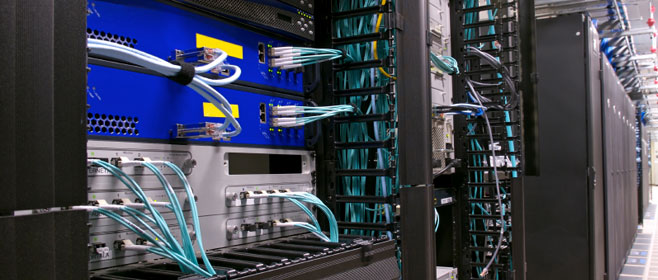
New Standards for Cabling and Category 8 Update
 The selection of proper cabling has become more crucial and also more complicated, but the process can be made easier by knowing about the choices available and updates regarding the development of Category 8 (CAT 8).
The selection of proper cabling has become more crucial and also more complicated, but the process can be made easier by knowing about the choices available and updates regarding the development of Category 8 (CAT 8).
There are several organizations that determine the standards for cabling, such as the ISO (International Organization for Standardization), IEC (International Electrotechnical Commission), TIA (Telecommunications Industry Association), and CENELEC (European Committee for Electrotechnical Standardization). However, our discussion will primarily focus on ISO/IEC and TIA.
As its standard calls for 10Gb/s rates of transmission, 10GBASE-T cabling is the fastest in the market. Unable to support 10Gb/s, Category 5e does not receive 10GBASE-T standard recognition. In addition, advisories by the TIA and ISO/IEC and TIA state that new class E/category 6 cabling should not be installed to support 10GBASE T. As a result, the cabling options for new installations that meet the 10GBASE-T standards for carrying data up to 100 meters are only found in the class EA/CAT 6A, class F/CAT 7, or class FA/CAT 7A.
Regarding data centers that are newly built, ISO, along with other standards organizations, have determined that CAT 6A should be the minimum grade. The task force overseeing IEEE 802.3 40GBASE-T have drafted the baseline objectives for the future 40 Gb/s standard, which is well beyond the capabilities of CAT 6A.
Cabling of a higher category traditionally matches and surpasses the electrical and mechanical standards of what preceded it. In addition, it is backwards compatible. Although TIA calls for cabling systems to perform at CAT 6A minimum, it will not be adopting CAT 7 or 7A as determined by ISO/IEC. TIA is naming its next class of cabling, Category 8, to differentiate it from ISO/IEC standards for CAT 7 and CAT 7A.
Interestingly, the proposed performance for CAT 8 will not be meeting or exceeding CAT 7A standards for up to 1 GHz. For example, regarding parameters for internal crosstalk, CAT 7A is superior to CAT 8 by more than 20 decibels.
Union Network Cabling
When work requires a unionized cabling group, call on Progressive Office Inc. for your commercial Cat5e/6/6a and fiber cabling projects. Specializing in cabling for data, voice, security and even the latest WiFi and LiFi solutions. Phone: (202) 462-4290


 After their Milan working group meeting in 2015 regarding
After their Milan working group meeting in 2015 regarding 
 Nowadays offices and homes utilize either a wireless (Wi-Fi) connection or wired
Nowadays offices and homes utilize either a wireless (Wi-Fi) connection or wired 


 Testing always plays a vital role in the process of installing new
Testing always plays a vital role in the process of installing new 
 Be sure to purchase the correct components before you install a wired
Be sure to purchase the correct components before you install a wired 
 t connects personal computers to the wall plate or provides the short interconnects among the switches, routers and the patch panels in the wall closet or Server Room. These make use of stranded wires instead of solid to increase flexibility. It also lessens the risk of cracking when you unplug the cable. There is also a variety of Ethernet patch called the crossover cable. It is used to hook up two PCs together and sometimes to interconnect switches.
t connects personal computers to the wall plate or provides the short interconnects among the switches, routers and the patch panels in the wall closet or Server Room. These make use of stranded wires instead of solid to increase flexibility. It also lessens the risk of cracking when you unplug the cable. There is also a variety of Ethernet patch called the crossover cable. It is used to hook up two PCs together and sometimes to interconnect switches.
 Networking cabling is not a simple task. It entails expertise and attention to detail. What are valuable insights that
Networking cabling is not a simple task. It entails expertise and attention to detail. What are valuable insights that 